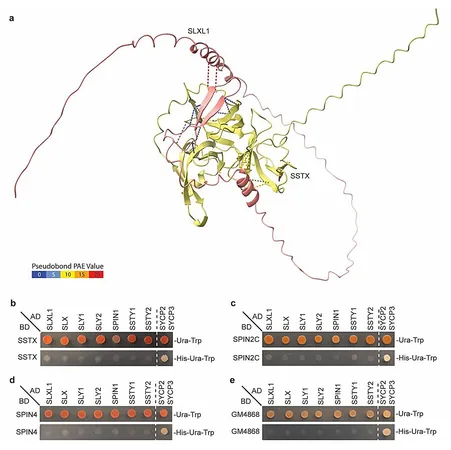
The Fierce Fight of the Sex Chromosomes: Unveiling the Secrets Behind X and Y Sperm Fitness
2025-04-04
Author: Li
In the grand saga of evolution, an organism's fitness hinges on its ability to survive and pass on its genes to future generations. This journey is fraught with competition among genes, particularly those residing on the X and Y chromosomes that dictate the sex of offspring in mammals. These chromosomes are engaged in an ongoing battle that profoundly affects populations—especially noticeable in species such as mice.
A groundbreaking study from the University of Michigan, published in Proceedings of the National Academy of Sciences, has shed light on the intricate dynamics of this genetic tussle. Researchers liken the competition between X and Y chromosome-derived sperm to historic space races, each striving to be the first to reach and fertilize an egg. "The X-carrying or Y-carrying sperm that gets there first is the one that successfully fertilizes the egg," explains Martin Arlt, Ph.D., an associate research scientist in the Department of Human Genetics.
Interestingly, the findings suggest that despite individual gene advantages, the sex ratio in these species remains astonishingly stable at nearly 50-50. Arlt notes, "If there were genes conferring benefits to X-bearing sperm, you would start to see more female offspring, and vice versa. Yet we observe this near parity." Maintaining this balance is critical, as straying from this ratio can threaten the survival of the species.
The mystery of how this balance is upheld has puzzled scientists for years, primarily because studying sperm in controlled environments has proven challenging. The University of Michigan team provided a clever workaround by transplanting the relevant genes—specifically, the X-linked Slxl1/Slx and Y-linked Sly gene families—into yeast. This provided a unique platform to grasp their interactions and competitive dynamics.
In their innovative approach, the research revealed that these proteins, which influence sperm fitness, are in a fierce cadre for binding to proteins known as Spindlins that dictate gene expression. The researchers discovered that when proteins from the X-linked genes bind more effectively than those from the Y-linked genes, a greater number of X-bearing sperm are produced, and the opposite holds true for Y-bearing sperm.
Jacob Mueller, Ph.D., an associate professor and senior author of the study, points out that these gene innovations are relatively recent on the evolutionary timeline, emerging only a few million years ago, after humans diverged from their primate relatives. Interestingly, while these genes are not essential for sperm production, they have adapted to play a critical role in the ongoing evolutionary arms race amongst species.
This arms race phenomenon is not exclusive to mice; evidence suggests that it occurs repeatedly across various species and timeframes, indicating a broader biological principle at play. These groundbreaking insights not only enhance our understanding of reproductive biology but also illuminate the evolutionary pressures that shape genetic competition.
As researchers continue to investigate, the battle of the sex chromosomes promises to unlock further mysteries, potentially redefining how we think about genetics, evolution, and the intricate mechanisms that drive biodiversity. Stay tuned, as these findings could have profound implications for our understanding of evolution itself and the future of genetic research!


 Brasil (PT)
Brasil (PT)
 Canada (EN)
Canada (EN)
 Chile (ES)
Chile (ES)
 Česko (CS)
Česko (CS)
 대한민국 (KO)
대한민국 (KO)
 España (ES)
España (ES)
 France (FR)
France (FR)
 Hong Kong (EN)
Hong Kong (EN)
 Italia (IT)
Italia (IT)
 日本 (JA)
日本 (JA)
 Magyarország (HU)
Magyarország (HU)
 Norge (NO)
Norge (NO)
 Polska (PL)
Polska (PL)
 Schweiz (DE)
Schweiz (DE)
 Singapore (EN)
Singapore (EN)
 Sverige (SV)
Sverige (SV)
 Suomi (FI)
Suomi (FI)
 Türkiye (TR)
Türkiye (TR)
 الإمارات العربية المتحدة (AR)
الإمارات العربية المتحدة (AR)